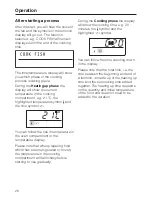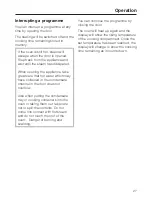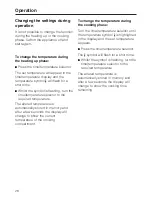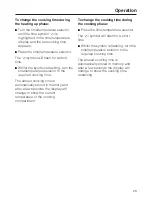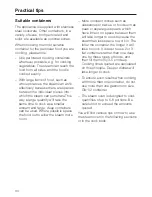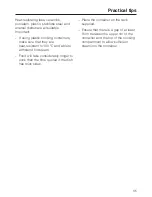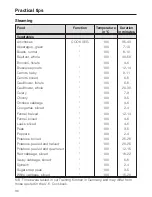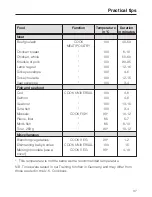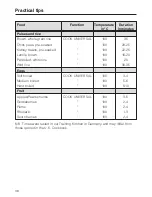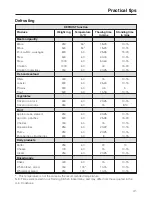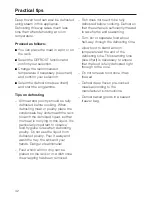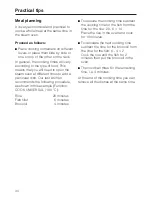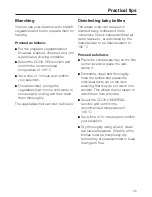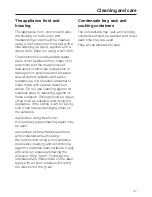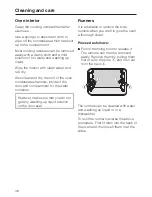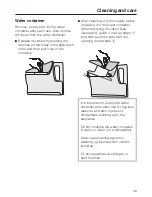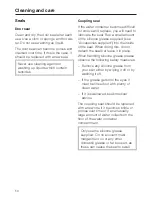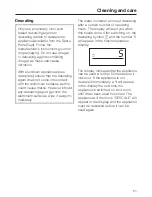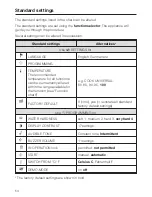
Tips on steaming
– Steam prevents food from drying out
so it remains moist, and juices are
not lost. This applies to a wide variety
of food, including dumplings, steam
puddings, fish and meat dishes, as
well as vegetables.
– You can select any runner level. You
can also cook on several levels at
the same time. This will not alter the
cooking time.
– Food does not brown or get crisp
from over-cooking. It is gently
steamed, and not roasted or baked.
Cheese melts perfectly without
getting burnt. It is a healthy way of
cooking, and it brings out the distinct
flavour of the food.
– When cooking frozen food, e.g.
vegetables, ensure that any large
clumps frozen together are broken
up first so that they cook evenly. The
cooking time is approximately the
same as for fresh vegetables.
– Cooking with steam retains the true
taste of the food better than
conventional cooking. Food should
not therefore be seasoned until after
it has been cooked.
– When cooking food which contains a
lot of liquid, do not fill higher than the
lowest ridge inside the container.
– Dried foods like pasta and rice must
be cooked in liquid. Pasta should be
well covered with liquid. With rice,
pulses etc. the proportion of food to
liquid should be 1:1.
– Cooking liquids do not boil away.
They are either absorbed by the
food, as with rice and pasta, or they
remain in the dish to form a sauce,
as with casseroles. The sauce can
then be thickened or added to after
cooking.
– Grease perforated containers
beforehand if using them to cook fish
in its skin, and solid containers if
using to cook dishes containing
eggs.
– To avoid any transfer of tastes
caused by moisture dripping down
from above, solid containers should
be placed on the rack above any
perforated containers.
Practical tips
39


